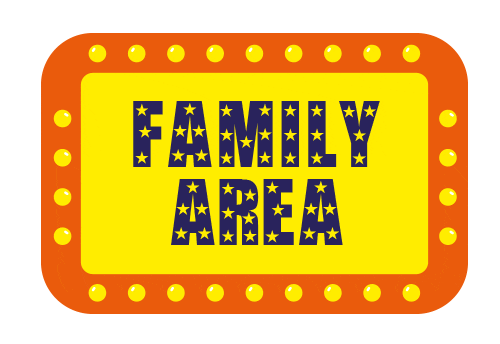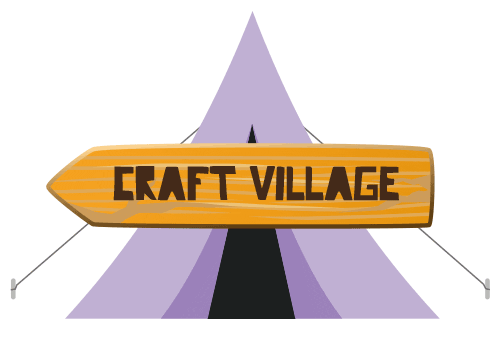My View of the Sea and ceramics
By Roseanne Fish
My View of the Sea
Hopefully this collage is as fun to look at as it was for me to make.
Almost every week my black Labrador/Retriever Guide Dog, Heidi, and I love to roam the beach. She swims, runs, chases sticks – it is one of the best places. We especially love Seaton beach.
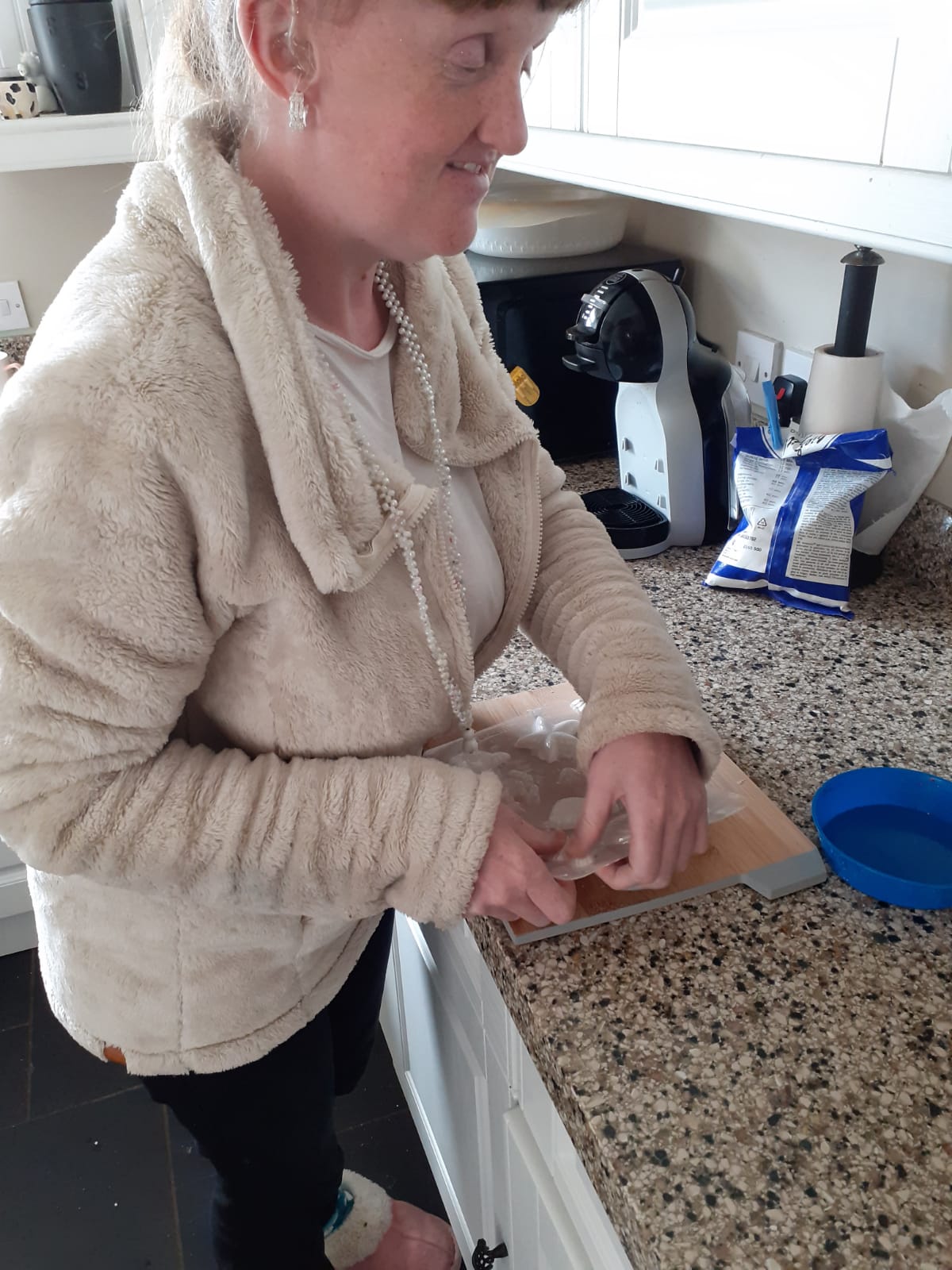
Making plaster moulds
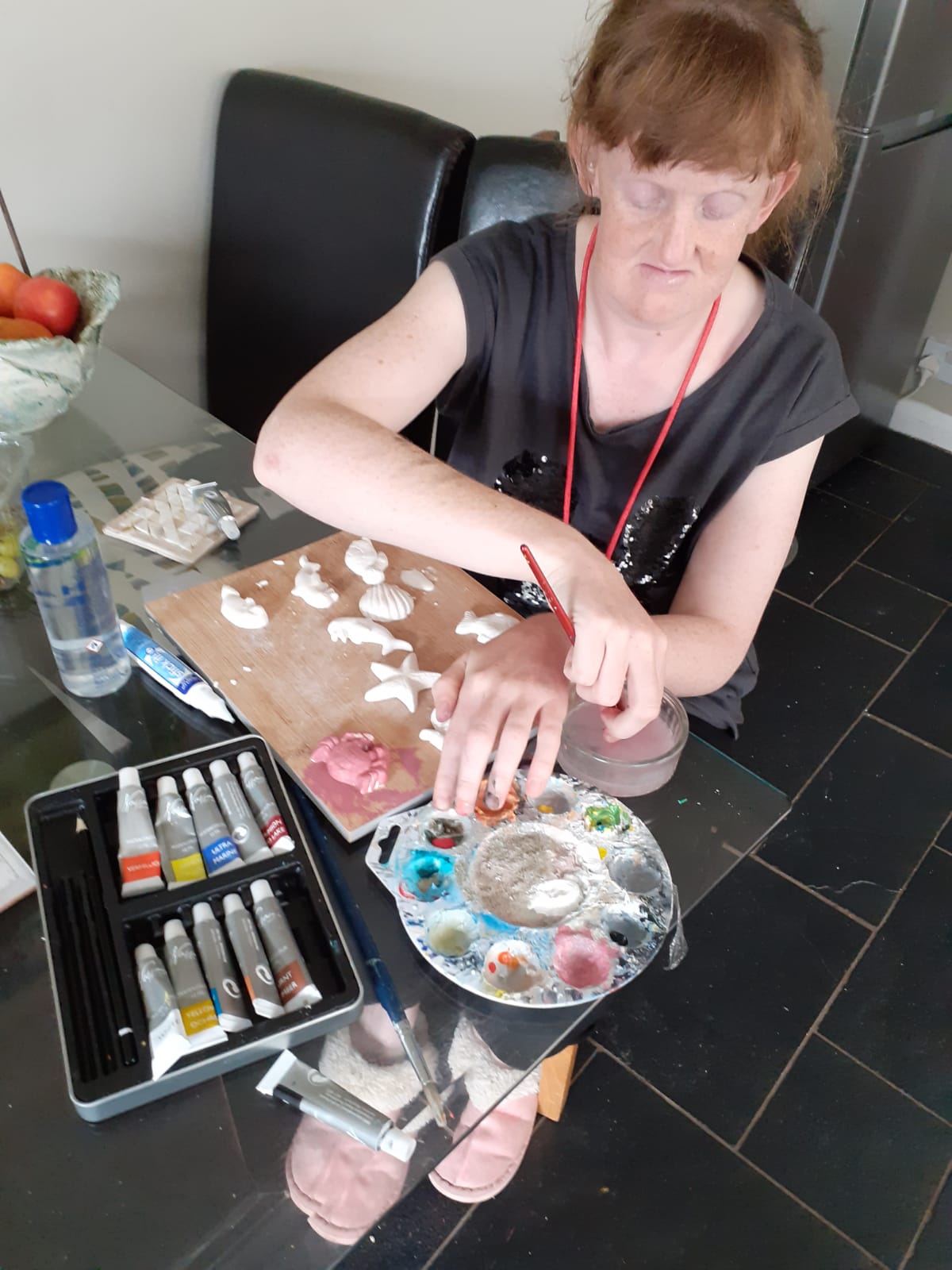
Painting one of the fish

Sticking on seaweed
One day starting to collect interesting stones, drift wood and sand and seaweed I decided to start a collage.
First the seaweed needed to dry out. So, whilst waiting, plaster powder was mixed with water and poured into the moulds.
The proportion of plaster powder with water was 1 thirds plaster to water. This was the messy part. I had to make sure all the moulds were filled properly. With a spatula I spread the mixture flat and left them to dry.
Included were a seal, sea horse, star fish, a big round fish, a dolphin and a large ridged shell.
They took about an hour to dry.
While these were setting along with the seaweed, I painted the canvas.
Using a rough board as a guideline for where to paint, I covered 2 thirds of the board in blue. This was the sea and sky.
It was important to make sure the line where the sea met the sky was straight. I brushed long side to side strokes, pressing quite firmly to help the canvas soak the paint.
For the ocean floor, sand was mixed up with paint, creating a lovely textured area at the bottom.
When removing the creatures from the moulds, I was gently pressing on the other side and holding it close to the work surface so that they wouldn’t fall and break. Any excess plaster around the edge was carefully scraped smooth with a kitchen knife.
When painting the plaster, it was easier to remember where each colour was in the pallet by the rainbow pneumonic: Richard of York gave battle in vain.
(red orange yellow green blue indigo violet. I always use pink in place of indigo though).
The dolphins and seal were painted grey, the fishes red and orange, the seahorse yellow and the turtle green.
PVA glue worked perfectly for sticking everything.
The seal and rock were the first to go on just up from the left bottom corner.
I liked this rock as it had a small dip in the top as if especially made for a seal to be comfortably seated.
Just below these were more rocks. Here the turtle found his home. I had made an extra fish and dolphin and These were spaced around the picture, the dolphins jumping from the sea surface, curving gracefully to the left.
The other two fish also face to the left, their fins, mouths and tails very tactile.
On the far right near some more rocks the sea horse stood proud, which left the crab and star fish to crawl along the rough sandy bottom. I liked the shell as the centre piece between them.
It was also nice to add two extra shells that I use for jewellery making.
The seaweed took a few days to dry out, also being flattened under.
It felt bubbly, like bubble wrap in thin strips, curly and interesting. Best of all the sea smell lingered. This needed quite a lot of PVA glue to stick.
Taking pictures as creating, all was finished within a few days.
This picture is how I see the sea. There’s plenty of texture and even musky, salty sea scent although I don’t know how long this will last.
The messiest part was making the plaster moulds and removing the excess pva glue when sticking. The best bit was removing the plaster casts from the moulds, revealing beautiful tactile scales, patterns and detail.
Plaster seemed the best substance to use as it picks out every detail. Before I did, however, consider using clay which is easier to push in to moulds.
Inspiration also came from Living Paintings. These are tactile pictures painstakingly made to represent famous paintings and lots more. They come with beautifully narrated descriptions.

My View of the Sea, by Roseanne Fish
Ceramic Cabbage Bowl
When I attended two years at Royal National College for the Blind in Hereford, there were fantastic opportunities to socialise, have fun, develop living skills and meet new people.
I attended ceramic club in the evenings. We had such fun on a throwing wheel, glazing and so much more.
One of my friends made an animal themed chess board. Some one else made a house, modelling each brick individually with such care.
I loved my own theme of dogs. One held a paint brush with a paint pot pouring over his head. Another one had a bucket on his head and spade in his mouth. A favourite was one with a ball between his paws and long floppy ears.
Our teacher was really encouraging and amazing. I decided to do the ceramics course. I was helped to develop ideas and learn new skills.
Throwing was the most fun, along with making moulds out of plaster and slip prints. We took plaster casts leaves and pine cones pressed into clay and pressed buttons to create interesting shapes.
Ideas grew.
My teacher brought a cabbage in. The leaves were very tactile. With them we made an amazing clay cabbage bowl. All we had to do was push the leaves into very soft moist clay. When several leaves had been pressed carefully the clay could be pushed flat in the desired shape and pulled gently off in a leaf impression.
The fiddly part was manipulating the leaves in to a bowl shape exposing the tactile, dimply rough parts on the inside. Slip, soft runny clay that had been mixed with water, was used to stick and smooth cracks.
There was a ceramic cabbage bowl. It could not have been more fun for someone with no sight.
Thank you to everyone who helped collect leaves, choose glaze colours and learn some fantastic skills.



